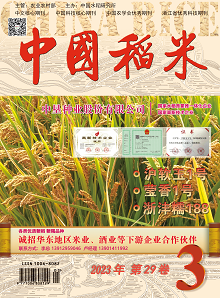In order to clarify the changes in the production pattern of China's rice dominant production areas and the current status of rice fertilization research, the publication, type, project distribution, research institutions, planting area, yield changes and fertilizer dosage of rice production and fertilization research in China were integrated and analyzed using the CNKI database, the China Rural Statistical Yearbook and the 2021 National Scientific Fertilization Guidelines as information sources. The results showed that, from 2011 to 2021, the rice planting area in China was in a state of dynamic equilibrium for the rest of the years, except for the fluctuations in 2017 and 2019, and the total rice yield and yield fluctuated to varying degrees and showed a trend of steady yield increase. The middle reaches of the Yangtze River Basin have the largest annual rice planting area and the highest annual yield; The rice yields were highest in the lower reaches of the Yangtze River Basin, with an average of 8 142.9 kg/hm2. Meta-analysis showed that optimizing rice fertilization mode, weight loss and efficiency improvement and improving cultivation technology were still the focus of national, social and academic attention. From 2013 to 2021, the number of published literature on rice yield and fertilization research in China has remained at more than 700 per year, reaching 922 in 2019, and the overall number of articles showed a downward trend after a slow rise. Among them, the middle reaches of the Yangtze River Basin has published the most relevant literature, accounting for 33.0% of the national literature; The types of published literature was mainly focus on technology application. Based on the data of rice yield and fertilization from 2011 to 2021, it is found that at the same rice yield level, there is still a certain difference between the amount of fertilizer applied in the dominant rice producing areas and the amount of fertilizer recommended by the state, among which the amount of potassium fertilizer applied in the lower reaches of the Yangtze River Basin and the amount of phosphorus and potassium fertilizer applied in the southeast coastal area have great potential for reduction, and the phenomenon of blind application of nitrogen, phosphorus and potassium fertilizers by some farmers in other main rice producing areas still exists. Therefore, each region should still apply chemical fertilizers scientifically and rationally according to local conditions.

